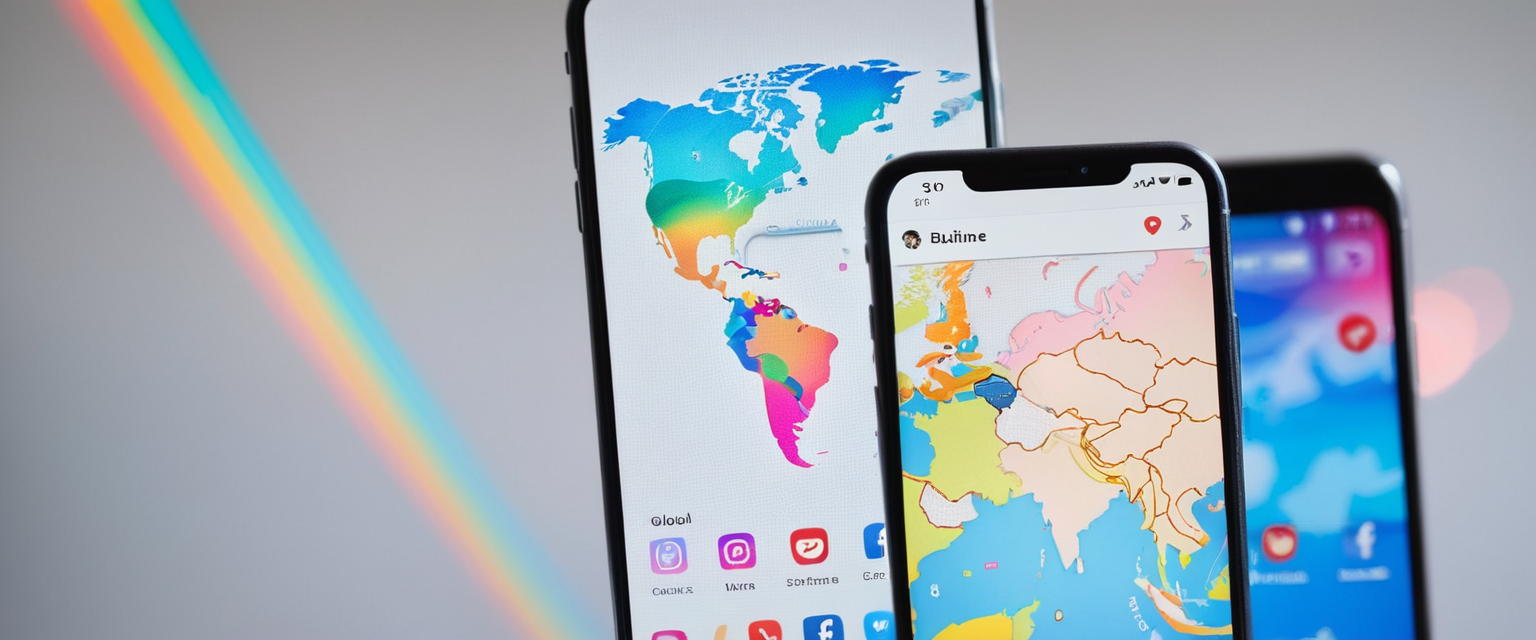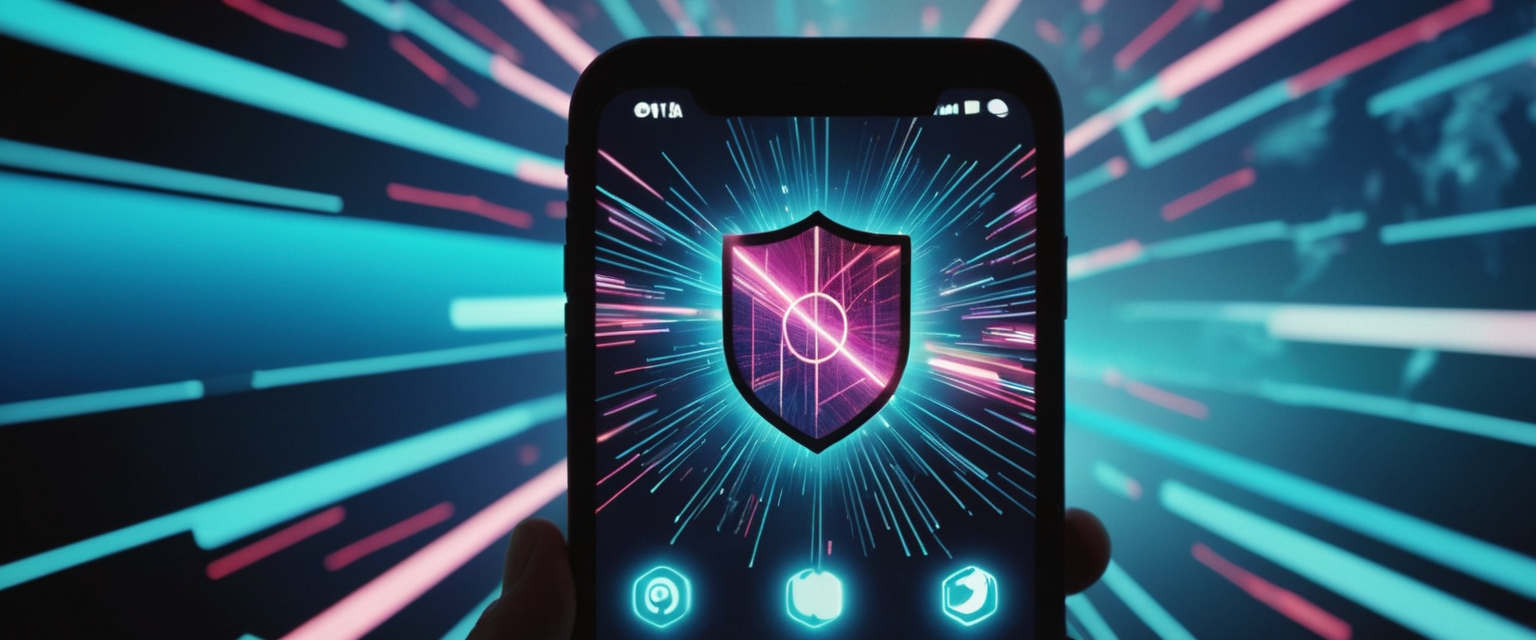
Using a Virtual Private Network (VPN) to access TikTok has become increasingly relevant as governments worldwide implement restrictions on the platform, with countries including India, Afghanistan, China, and temporarily the United States imposing bans or significant limitations on the application. A VPN functions as a critical tool for bypassing geographic restrictions by masking a user’s true Internet Protocol address and routing internet traffic through encrypted servers located in countries where TikTok remains accessible, such as Canada, the United Kingdom, Singapore, or Japan. However, the process of successfully using a VPN with TikTok involves far more complexity than simply installing the software and connecting to an alternate server, requiring users to understand TikTok’s increasingly sophisticated detection mechanisms, navigate the platform’s 90-day region lock enforcement system, manage the risk of account shadowbans, and confront both technical limitations and potential legal implications depending on their jurisdiction. This report provides an exhaustive examination of how to properly utilize VPNs for TikTok access, exploring the technical infrastructure behind these tools, evaluating the most reliable VPN providers currently available in 2025, detailing comprehensive troubleshooting methodologies, and examining the broader context of why these measures have become necessary as TikTok faces unprecedented regulatory scrutiny globally.
Understanding TikTok’s Global Ban Status and Regulatory Landscape
TikTok’s accessibility varies dramatically across different nations and regions, creating a patchwork of restrictions that necessitates VPN usage for millions of users worldwide. The most comprehensive bans exist in a number of countries including India, which implemented a nationwide ban affecting over 200 million users citing cybersecurity concerns and data privacy violations, and Afghanistan, where Taliban leadership prohibited the application along with other Chinese platforms on grounds of allegedly containing immoral content. In Iran, TikTok remains blocked through government censorship mechanisms, while China itself does not offer access to the international version of TikTok but instead provides Douyin, a separate application tailored for the Chinese market with different features and political content moderation standards. Somalia and Nepal have also enforced nationwide bans, though Nepal’s ban was lifted in August 2024 following negotiations between the government and TikTok regarding content moderation and criminal misuse identification.
Beyond outright nationwide bans, numerous Western democracies have imposed partial restrictions targeting government employees and officials. The United Kingdom restricts TikTok on government ministers’ and civil servants’ mobile phones, as does France on recreational apps accessed by government employees, while Australia, Belgium, Canada, Denmark, and the Netherlands have implemented similar prohibitions on government-issued devices due to national security concerns. Taiwan, which faces significant geopolitical tensions with China, banned TikTok from government devices in December 2022 and is considering extending restrictions to the private sector over concerns about Chinese government usage of the platform for cognitive warfare operations. The United States experienced a particularly dramatic period in January 2025 when a nationwide ban temporarily took effect, causing the app to go offline for approximately 14 hours before President Trump signed an executive order suspending enforcement for 75 days, though the app remained unavailable in major app stores. Understanding this landscape is critical for VPN users because attempting to connect through VPN servers located in banned countries will not provide access, meaning users must connect through servers in permissive jurisdictions such as Canada, the United Kingdom, Singapore, or the United States.
How VPNs Function as a Mechanism for TikTok Access
A Virtual Private Network operates through a fundamentally straightforward principle that becomes remarkably sophisticated in execution: it creates an encrypted tunnel through which all internet traffic is routed, masking the user’s genuine geographic location and making their internet activity invisible to Internet Service Providers, local network administrators, and potentially to TikTok’s detection systems. When a user connects to a VPN, their device communicates with a VPN server located in their selected country, and all subsequent internet requests appear to originate from that server’s location rather than from the user’s actual physical position. This capability directly addresses TikTok’s primary restriction mechanism, which relies on identifying users’ IP addresses and translating them into geographic locations through GeoIP databases such as Maxmind. By providing users with an IP address associated with a country where TikTok operates unrestricted, the VPN essentially convinces TikTok’s servers that the user is accessing the platform from a legitimate jurisdiction, thereby granting access to the application and its full feature set.
Beyond simple IP address masking, modern VPN applications provide additional security and privacy features that enhance protection beyond what basic VPN services offered in previous years. Quality VPN providers implement encryption protocols such as 256-bit AES encryption, which renders all data transmitted through the VPN tunnel incomprehensible to network monitors, including TikTok itself. This encryption proves particularly valuable for users concerned about privacy on public Wi-Fi networks or those in countries with invasive internet surveillance regimes. Many premium VPN services employ proprietary protocols designed specifically to evade detection: NordVPN offers NordLynx and NordWhisper protocols, ExpressVPN utilizes its Lightway protocol, and CyberGhost implements obfuscation features that disguise VPN traffic itself so that it appears as regular internet activity rather than VPN usage. These obfuscation technologies prove especially critical for users in heavily censored regions like China, where governments actively detect and block VPN traffic through deep packet inspection and behavioral analysis.
The architecture of TikTok’s geographic blocking deserves detailed examination, as understanding what the VPN must overcome informs why certain VPN configurations succeed while others fail. TikTok determines user location through multiple overlapping signals rather than relying exclusively on IP address data. The platform monitors GPS coordinates transmitted by mobile devices, analyzes SIM card location information on cellular connections, tracks device language and regional settings, examines Wi-Fi network data, and even analyzes engagement patterns and account creation timestamps to identify inconsistencies that suggest VPN usage. This multi-layered approach means that users cannot assume a VPN alone will guarantee access; they must address these additional detection vectors through corresponding configuration changes on their devices.
Step-by-Step Implementation Guide for VPN-Based TikTok Access
Successfully implementing VPN access to TikTok requires following a carefully ordered sequence of steps that addresses both the VPN connection itself and the various device-level factors that TikTok uses to verify geographic location. The initial step involves selecting an appropriate VPN provider, with leading options including NordVPN for its overall performance and server variety, ExpressVPN for its user interface and speed, Surfshark for budget-conscious users, ProtonVPN for privacy-oriented individuals, and CyberGhost for ease of use. Once a provider has been selected, users must download and install the VPN application onto their device by visiting the official VPN provider website or their device’s application store, following the installation wizard, and creating an account with proper login credentials.
After VPN installation, users should open the VPN application, log in with their credentials, and navigate to the server list or geographic map interface that most VPN applications provide. At this stage, selecting the appropriate server becomes critically important: users should choose a server in a country where TikTok operates without restrictions, with commonly effective choices including Canada, the United Kingdom, Singapore, Japan, or the United States, avoiding any servers located in countries with TikTok restrictions such as India, Iran, or Afghanistan. The platform recommends selecting a server that shows lower current load to maximize connection speeds and reduce buffering when accessing video content. Users should then connect to the selected VPN server by tapping or clicking the connection button and waiting for confirmation that the connection has been successfully established, which typically manifests as a visual indicator change or notification.
Critically, users should take several preparatory steps before launching TikTok itself to minimize the likelihood of the platform detecting inconsistencies in location data. These preparatory measures include disabling GPS and location services on the mobile device through the device’s settings menu, removing or inserting a SIM card associated with a different country if possible, setting the device’s system language and region settings to match the VPN country, and clearing all cached data and cookies from previous TikTok sessions. For users who previously accessed TikTok from a different geographic region, completely uninstalling and reinstalling the TikTok application after connecting to the VPN can reset the application’s cached location data and provide the best probability of successful region detection. Only after completing these preparatory steps should users open the TikTok application and, if already logged into an account, observe whether the application functions normally with the new regional content feed.
For users who do not already have TikTok installed on their devices and are accessing from a country where TikTok bans exist, a more complex procedure becomes necessary to download the application in the first place. This requires changing the country or region associated with their device’s app store account—a process that differs between iOS and Android platforms and involves providing payment information and residential address details for a different country. On iOS, users must navigate to their App Store account settings, select “Country or Region,” and change it to a country where TikTok is available, though this process violates the terms of service of both Apple and Google and carries the risk of account suspension. Android users must create a new Google Play account with an alternate email address associated with a different country, a process that is technically simpler but still involves duplicitous account management. After changing app store regions, users should connect to their VPN server before downloading TikTok, ensuring that the app store itself recognizes the alternate geographic location.

Comprehensive Evaluation of Leading VPN Providers for TikTok Access
The selection of an appropriate VPN provider represents perhaps the most consequential decision users make when pursuing TikTok access, as not all VPNs demonstrate equal effectiveness at bypassing TikTok’s detection systems. NordVPN emerges consistently as the top-ranked VPN for TikTok access across independent testing from November 2025, operating more than 7,800 servers across 118 countries and delivering exceptional speeds averaging 223.02 Mbps in testing, making it ideal for streaming high-definition video content. NordVPN’s effectiveness stems partly from its implementation of proprietary stealth protocols including NordLynx, which provides encryption resistant to future quantum computing attacks, and NordWhisper for situations where users do not wish to conceal VPN usage. The service implements comprehensive security features including IPv6 and DNS leak protection, Tor over VPN capabilities, obfuscated servers, and double-hop connections that route traffic through multiple servers for enhanced privacy. NordVPN allows simultaneous connections to up to ten devices on a single account, features round-the-clock live chat customer support, and offers a risk-free 30-day money-back guarantee.
ExpressVPN presents a strong alternative for users prioritizing speed and user interface quality, operating more than 3,200 servers across 105+ countries with consistent optimization for stability and velocity. The service provides obfuscation by default, enabling reliable access to TikTok even in heavily censored jurisdictions like China and the United Arab Emirates where many standard VPNs fail. ExpressVPN’s minimalist graphical user interface employs a straightforward checkbox system making it accessible to both experienced and novice users, while the Advanced Protection tab allows users to specify types of threats they anticipate encountering. The Media Player feature, a free smart DNS service included with ExpressVPN, enables access to numerous geo-restricted platforms including Netflix, Hulu, HBO Max, and Amazon Prime Video. ExpressVPN employs perfect forward secrecy, HMAC authentication, a kill switch to prevent data leaks if the connection drops, and comprehensive leak protection, using 256-bit AES encryption to protect all connections. The service permits connections to eight devices simultaneously and offers a 30-day money-back guarantee.
Surfshark establishes itself as the premier budget-friendly option for cost-conscious users, implementing unlimited simultaneous device connections on a single subscription, a feature distinguishing it from competitors that impose connection limits. Despite its lower price point, Surfshark maintains strong encryption and security protocols comparable to premium providers, implements obfuscated servers for advanced anonymity, and operates servers across 100+ countries. The service provides split tunneling capabilities allowing users to route only TikTok traffic through the VPN while other applications use direct connections, thereby reducing overall data consumption and improving performance for bandwidth-intensive applications. Surfshark’s applications for desktop and mobile platforms feature intuitive design while maintaining advanced features for experienced users, and the service offers a 30-day money-back guarantee.
ProtonVPN distinguishes itself through its privacy-centric approach and generous free plan offering unlimited data bandwidth, making it attractive to budget-constrained users. The free version remains surprisingly effective at bypassing TikTok firewall blocks, as demonstrated through rigorous testing over week-long periods on restricted office networks where it consistently unblocked TikTok access without failure. Free users access the VPN’s Stealth protocol providing traffic obfuscation that helps circumvent network administrator blocks of VPN protocols themselves. ProtonVPN operates more than 14,900 servers globally, though speed performance lags behind premium competitors with download speeds averaging approximately 380 Mbps and upload speeds declining to just 49 Mbps. The service operates under Swiss jurisdiction with exceptionally strong privacy laws preventing forced data logging, maintains a strict no-logs policy verified through independent audits, and implements DNS leak protection through its own proprietary DNS servers.
CyberGhost VPN appeals to users with limited technical expertise through its streamlined interface and extensive server network comprising more than 11,500 servers including over 1,300 based in the United States. The service provides specialized streaming servers optimized specifically for popular platforms, with each streaming server accompanied by a list of services it supports. While CyberGhost lacks obfuscation capabilities that limit its utility in heavily censored regions like China, it excels in standard geo-blocking scenarios through raw server abundance and distribution. Average speeds from CyberGhost testing reached 151.10 Mbps, remaining sufficient for HD video streaming despite being lower than top-tier competitors. The provider offers unlimited data and no bandwidth caps, making it excellent for heavy video consumption.
Protect Your Digital Life with Activate Security
Get 14 powerful security tools in one comprehensive suite. VPN, antivirus, password manager, dark web monitoring, and more.
Get Protected NowUnderstanding TikTok’s Detection Mechanisms and VPN Blocking Techniques
TikTok’s approach to detecting and preventing VPN usage demonstrates remarkable technical sophistication, employing multiple redundant detection methods that ensure blocking functionality persists even when users successfully circumvent one or two individual mechanisms. The most straightforward detection technique involves maintaining an actively updated blacklist of known VPN server IP addresses, which TikTok obtains through GeoIP databases and by identifying patterns of connection behavior associated with VPN services. When users attempt to access TikTok from an IP address known to be associated with VPN infrastructure, TikTok’s systems immediately reject the connection attempt. This mechanism explains why users frequently encounter “Not available in your region” error messages despite connecting to a VPN, as the particular IP address assigned to them happens to already appear on TikTok’s blacklist of known VPN addresses.
Beyond static IP blacklisting, TikTok implements behavioral analysis algorithms that identify patterns consistent with VPN usage even when the specific IP address has not been previously blacklisted. The platform monitors for rapid changes in IP addresses associated with the same account, with multiple logins from identical IP addresses to different accounts occurring within short time intervals, or sudden geographic inconsistencies such as a user appearing to be in different countries within impossibly short timeframes. These behavioral anomalies trigger algorithmic flags that can result in temporary access restrictions, shadowbans limiting content visibility, or account suspension depending on the severity and frequency of detected violations.
Technical data leakage provides another avenue through which TikTok identifies VPN usage despite users’ efforts to route their connections through VPN servers. DNS (Domain Name System) leaks occur when DNS queries—requests to translate domain names into IP addresses—bypass the encrypted VPN tunnel and instead route through the user’s Internet Service Provider’s DNS servers. WebRTC leaks present a particularly insidious vulnerability, as the WebRTC protocol implemented in web browsers can reveal a user’s actual IP address even when accessing websites through a VPN connection. Poor quality VPNs frequently fail to prevent these leaks, thereby exposing users’ true locations to TikTok’s detection systems despite the users believing their connections to be fully protected. Reputable VPN providers address these vulnerabilities through DNS leak protection technologies that route all DNS queries through the VPN’s own DNS servers rather than the ISP’s, and through blocking IPv6 connections that might otherwise bypass IPv4-based VPN protection.
Additional detection methodologies leverage mobile device characteristics and localization systems that operate independently of VPN protocols. GPS data transmitted by mobile devices provides precise geographic coordinates that contradict VPN-spoofed locations. SIM card information reveals carrier and country association even when the device connects through a VPN. Device time zone settings, system language configurations, and even app store account regions provide multiple overlapping signals that TikTok cross-references to identify geographic inconsistencies. Browser cookies and cached data stored during previous TikTok sessions contain location information that persists even after connecting to a VPN. This multi-layered detection approach explains why simply connecting to a VPN proves insufficient for reliable TikTok access; users must address these complementary detection vectors through corresponding modifications to their device configurations.
Troubleshooting VPN Connection Issues with TikTok
When VPN connections fail to provide successful TikTok access, numerous systematic troubleshooting methodologies can identify and resolve the underlying issues. The most frequently effective solution involves switching to a different VPN server, as TikTok actively blacklists IP addresses as they are identified as VPN infrastructure. Users experiencing access problems should attempt connecting to a different server within the same country, as VPN providers typically operate multiple servers per geographic location, with each assigned different IP addresses. If same-country servers fail, users should switch to entirely different geographic locations such as transitioning from Canada to the United Kingdom or Singapore, as this changes the assigned IP address and potentially bypasses blacklist blocks. This approach remains the single most effective troubleshooting technique, successfully restoring access in a substantial percentage of cases without requiring other modifications.
Clearing cached application data and browser cookies removes persistent location information that TikTok uses to identify geographic inconsistencies. On Android devices, users should navigate to Settings > Apps > TikTok > Storage > Clear Cache and Clear Data, then fully close and restart the application. On iOS devices, the most effective approach involves completely uninstalling the TikTok application and reinstalling it after confirming that the VPN connection remains active, as this prevents iOS from preserving cached data. For browser-based TikTok access, users should manually clear browsing history, cookies, and cached files through the browser settings—on Chrome this requires clicking the three-dot menu, selecting “Delete browsing data,” choosing “All time” from the time range dropdown, ensuring all categories are selected, and clicking “Delete data”.
Disabling location services on mobile devices prevents GPS data from revealing the user’s actual geographic position to TikTok. Users should open their device Settings, locate Location or Location Services depending on their device type, and toggle it to the off position. Similarly, removing the physical SIM card from the mobile device entirely eliminates location data that cellular networks provide to applications. For extended troubleshooting, users might consider enabling airplane mode on their devices, then manually reestablishing internet connectivity exclusively through Wi-Fi connected to the VPN, which eliminates cellular network location data while maintaining encrypted VPN connection. These location-specific modifications directly address one of TikTok’s primary detection mechanisms beyond IP address identification.
Verifying that the VPN application remains updated to its most recent version prevents compatibility issues and ensures access to the latest server infrastructure and detection evasion technologies. Users should check their VPN provider’s app store or official website to confirm they are running the latest version, and if not, should update immediately. Similarly, ensuring the TikTok application itself remains updated prevents bugs or incompatibilities that might interfere with VPN functionality. Many VPN connections fail not due to VPN inadequacy but rather to outdated software on the user’s device or insufficient storage space causing software conflicts.
Enabling the kill switch feature included with quality VPN applications prevents data leakage if the VPN connection drops unexpectedly. The kill switch, available in all Proton VPN plans and most premium VPNs, immediately halts all internet traffic if the connection to the VPN server is interrupted, preventing the user’s real IP address from being exposed to TikTok or other monitoring systems. Users should open their VPN application settings, locate the Kill Switch option, and toggle it to the enabled position. Simultaneously, users should enable DNS leak protection if available through their VPN provider’s settings menu, providing an additional safeguard against location data exposure.
In scenarios where all standard troubleshooting fails, users should contact their VPN provider’s customer support team, as many issues stem from server-specific problems or account-level configuration issues that support representatives can diagnose and resolve. Leading VPN providers including NordVPN, ExpressVPN, and ProtonVPN offer 24/7 live chat support specifically for addressing technical problems. Users should provide detailed information about the specific error messages encountered, which servers have been attempted, and what troubleshooting steps have already been completed, enabling support staff to provide targeted solutions.

The 90-Day Region Lock System and Advanced Location Management
TikTok implements a sophisticated 90-day region lock system that prevents users from casually switching between geographic regions and accessing content from multiple areas simultaneously, even when using VPNs that successfully mask their IP addresses. This system operates by locking a user’s account to a specific region based on multiple data points beyond IP address, with the region lock persisting for approximately 90 days from the initial account setup or last region change. The 90-day period incentivizes legitimate regional separation rather than encouraging users to hop between geographic content feeds, aligning with TikTok’s business model of localizing content and providing targeted recommendations based on regional user bases.
The region lock determination relies on multiple overlapping signals that TikTok synthesizes into a unified location determination, preventing simple circumvention through IP spoofing alone. Specifically, TikTok considers the SIM card carrier country, device language and regional settings, app store account region, app usage patterns and engagement history, GPS location data when available, Wi-Fi network location information, and device time zone settings. This multiplicity of signals creates redundancy ensuring that if one detection method proves ineffective, other mechanisms still identify the user’s true location. Users attempting to access TikTok through a VPN from India, for example, might successfully establish a VPN connection to Canada through IP masking, yet still find their account serving Indian content rather than Canadian content because their SIM card identifies India-based cellular service, their device language remains set to Hindi, and their app store account remains associated with Indian billing information.
Successfully overcoming the 90-day region lock requires comprehensive device-level modifications synchronized with VPN connection and occurring before any TikTok application launch. Users should complete the following modifications in sequence: first, removing their physical SIM card to eliminate cellular network location signals; second, disabling all location services through device settings; third, modifying device language and regional settings to match their target VPN country; fourth, changing their app store account country to match the VPN location, which requires providing payment information and residential address for the target country; and fifth, connecting to the appropriate VPN server before launching TikTok for the first time from the new region. Users should maintain consistency by continuing to use the identical VPN server and country throughout the subsequent 90 days, avoiding server switching or geographic jumping that resets the region lock counter. After 90 days, if users desire to switch to a different regional feed, they must repeat this entire process with a new geographic target, completing the modifications and maintaining consistency for another 90-day period.
For users creating entirely new TikTok accounts rather than modifying existing ones, implementing these changes before creating the account provides optimal probability of the system correctly identifying and locking to the intended region. The critical advantage of account creation in the intended region involves avoiding the need to overcome pre-existing region lock associations from previous access in different geographic areas. New account creation should occur entirely through browser-based access to tiktok.com rather than through the mobile application, as the web version bypasses certain mobile device localization factors and provides more flexibility for geographic configuration.
Shadow Bans, Account Restrictions, and VPN-Related Penalties
Beyond simple access blockage, TikTok implements algorithmic penalties including shadow bans and account restrictions that specifically target VPN usage and perceived geographic inconsistencies. A shadow ban, distinct from full account suspension, occurs when TikTok’s algorithms suppress a user’s content visibility without notifying the user that restrictions have been applied. Users experiencing shadow bans notice dramatic drops in video views, engagement rates, likes, and comments, with their content failing to appear on the “For You” page or in hashtag search results despite remaining technically visible on their own profile. Shadow bans typically persist for several days to two weeks depending on violation severity, though some users report experiencing consecutive shadow bans if violations persist.
VPN usage itself can trigger shadow banning, particularly when TikTok’s algorithms detect location inconsistencies suggesting VPN activity. When multiple data streams—such as GPS coordinates, SIM card information, app store region, and device settings—contradict each other, or when users rapidly change geographic regions through VPN switching, TikTok’s systems interpret this as suspicious behavior warranting content visibility suppression. To minimize shadow ban risk, users should maintain consistency, avoiding frequent VPN server switches, geographic region jumping, or account behavior changes that suggest automated bot activity or ban evasion attempts. Users should also refrain from rapid account creation, mass following or unfollowing, excessive posting, spammy engagement patterns, or other behaviors that TikTok’s algorithms associate with platform abuse.
More severe violations result in IP bans, device bans, or full account suspensions that completely prevent access to TikTok from affected devices or IP addresses. IP bans prevent access from a specific internet connection regardless of which account attempts login, effectively blocking all users sharing that IP address. Device bans attach permanent identifiers to the specific hardware attempting access, preventing new account creation even after factory resetting if TikTok’s detection systems recognize the device hardware fingerprint. These severe penalties are reserved for users posting content violating TikTok’s community guidelines regarding violence, sexual content, hate speech, or self-harm, for users engaged in severe spam or bot activity creating multiple fake accounts, or for users detected engaging in ban evasion by immediately creating new accounts after existing accounts are suspended.
Recovery from shadow bans requires users to immediately cease problematic behavior, delete or make private any content that triggered the algorithmic flag, review TikTok’s Community Guidelines to ensure understanding of platform rules, and post high-quality content aligning with community standards for 48 to 72 hours while potentially experiencing reduced visibility. Users should avoid engaging in any additional suspicious activity, should refrain from VPN switching during the recovery period, should not attempt to artificially boost engagement through purchased followers or bot interactions, and should remain consistent with established posting patterns and engagement behaviors. Approximately 48 to 72 hours after ceasing problematic behavior, TikTok’s algorithms typically gradually restore content visibility as the platform reassesses the account’s legitimacy.
Advanced Considerations: Privacy Protections and Data Security
Beyond circumventing geographic restrictions, VPN usage with TikTok provides significant privacy and security benefits that justify their use even for users located in countries where TikTok operates without restrictions. TikTok’s data collection practices generate substantial privacy concerns, with the application requesting access to contacts, camera, microphone, gallery, and location data far beyond what is technically necessary for video creation and sharing functionality. By routing TikTok traffic through an encrypted VPN connection, users prevent their Internet Service Provider from monitoring their TikTok usage patterns and creating behavioral profiles based on their engagement with the platform. ISPs routinely sell anonymized browsing data to third-party data brokers, who use this information for targeted advertising, and VPN encryption prevents ISPs from seeing which specific websites and applications users access.
The encryption protocols employed by quality VPNs provide additional protection beyond location spoofing, particularly important when users access TikTok from public Wi-Fi networks in cafes, airports, or hotels where unencrypted network traffic is vulnerable to interception by malicious actors. VPNs encrypt all data transmitted to and from TikTok’s servers, preventing network-level eavesdropping even if attackers have compromised the Wi-Fi access point. This protection proves especially valuable for users accessing accounts containing personal or sensitive information, though it is important to note that VPNs do not encrypt data stored on TikTok’s servers themselves, only data transmitted between the user’s device and TikTok’s infrastructure.
However, users should maintain awareness that VPNs introduce their own privacy considerations, particularly regarding which VPN provider they select. Free VPN services have repeatedly demonstrated themselves to be security risks, with investigations revealing that numerous free VPN providers log user activity despite claiming no-logs policies, sell user bandwidth to third parties for profit, inject advertisements into user traffic, monitor browsing patterns and sell aggregated data to the highest bidder, and occasionally contain malware or spyware components. The fundamental economics of free VPNs dictate that if users are not paying for a service, the service must monetize users in alternative ways, typically through privacy violations that prove far more valuable than subscription revenue. Private Internet Access, among the most reputable VPN providers, has had its no-logs policy proven multiple times in court during legal proceedings, providing verifiable evidence that the service genuinely does not maintain user activity records. Users should exclusively select paid VPN services from established providers with transparent privacy policies, published security audit reports, and established track records of protecting user privacy rather than exploiting it.
The specific configuration of paid VPN services used with TikTok proves consequential for both privacy and effectiveness. Premium VPN services including NordVPN, ExpressVPN, Surfshark, and ProtonVPN employ kill switch features that automatically terminate internet connections if the VPN connection drops unexpectedly, preventing accidental unencrypted access to TikTok or other services. These providers implement perfect forward secrecy encryption, ensuring that even if future quantum computing developments render current encryption obsolete, previously recorded encrypted communications remain secure. Many leading VPN providers maintain corporate structures and jurisdictions specifically selected to minimize legal obligations to provide user data to governments, with ProtonVPN operating under Swiss privacy law and ExpressVPN headquartered in the British Virgin Islands, both jurisdictions with significantly more protective privacy laws than the United States or European Union.

Limitations of VPNs for TikTok and Alternative Considerations
While VPNs provide valuable tools for circumventing TikTok geographic restrictions, their limitations deserve thorough examination to ensure users maintain realistic expectations about their utility. In scenarios involving full government-level bans enforced through multiple complementary mechanisms, VPNs prove substantially less effective than users assume. The United States TikTok ban implemented in January 2025 provides instructive context: although VPNs could theoretically mask users’ IP addresses to appear as if they accessed from other countries, the ban operated through multiple independent enforcement mechanisms that VPNs could not overcome. App stores removed the application from their distribution networks, preventing new downloads regardless of VPN usage. The app itself began degrading over time as TikTok ceased providing server-side updates through US app stores, meaning even users with previously downloaded applications eventually faced non-functional versions as bugs accumulated and compatibility issues emerged.
More fundamentally, the ban imposed legal liability on US companies providing technical services to TikTok, creating liability exposure for ISPs, cloud providers, payment processors, and other infrastructure companies that supported the platform. Over time, this legal pressure resulted in progressive service degradation making the application increasingly non-functional in the US regardless of VPN attempts to circumvent technical blocks. Users with sophisticated technical expertise might employ alternative approaches including custom operating systems like GrapheneOS on Android combined with VPNs, allowing more comprehensive control over device identifiers and location signals. However, such approaches remain accessible only to technically advanced users and may still fail against determined government-level enforcement.
Desktop browser-based access to TikTok presents an alternative pathway when mobile application access proves unreliable despite VPN usage. The TikTok website (tiktok.com) provides substantially reduced functionality compared to the mobile application, limiting content consumption capabilities and preventing video creation and uploading directly through the browser. However, for users whose primary interest involves watching content rather than creating or uploading, the web browser version provides adequate access while potentially being less aggressively blocked than the mobile application in certain jurisdictions. Browser-based access typically requires more robust VPN configurations including obfuscation protocols, as static IP addresses accessing the website through browsers may be more easily blocked than mobile application traffic.
The split tunneling feature offered by premium VPN services provides another nuanced approach for TikTok access in certain scenarios. Split tunneling allows users to designate specific applications or websites that route through the VPN while other traffic uses direct connections, thereby reducing total data overhead and freeing bandwidth for non-VPN applications. Users might configure split tunneling to route only TikTok through the VPN while allowing other applications to use direct connections, reducing the probability that behavioral analysis algorithms detect suspicious patterns of all-traffic VPN usage. However, split tunneling reduces the privacy benefits of VPN usage, as non-VPN applications transmit data unencrypted and identifiable by ISPs and network monitors.
The Final Scroll: Your Unrestricted TikTok
Successfully using a VPN to access TikTok in regions where the platform faces restrictions requires sophisticated understanding of both the technical infrastructure underlying VPN services and the multilayered detection mechanisms TikTok employs to identify and block VPN usage. Rather than viewing VPNs as a simple technical toggle that universally enables access, users must recognize them as one component within a comprehensive approach addressing TikTok’s multiple overlapping detection mechanisms including IP address identification, behavioral analysis, GPS location data, SIM card signals, device language and regional settings, and browser cookie information. The most effective TikTok access methodology combines a premium quality VPN service selected from the leading providers documented in this report with systematic device configuration modifications implemented before first accessing TikTok, including GPS disabling, location service configuration, device language and regional settings modification, and potential SIM card removal or replacement.
The VPN provider selected proves remarkably consequential for success probability, with NordVPN consistently demonstrating superior effectiveness across independent testing due to its extensive server network, proprietary obfuscation protocols, excellent speed performance, comprehensive security features, and responsive customer support. ExpressVPN provides an excellent alternative for users prioritizing user interface quality and consistent performance, while Surfshark offers superior value for budget-conscious users through unlimited simultaneous device connections and comprehensive security features at lower price points. ProtonVPN’s generous free tier and privacy-centric approach appeal to users with limited budgets or heightened privacy concerns, though its speed performance lags premium alternatives. All leading VPN providers offer 30-day money-back guarantees enabling risk-free trials to verify effectiveness with users’ specific devices and configurations before committing to long-term subscriptions.
Troubleshooting when VPN connections fail to provide successful access should follow systematic methodologies starting with server or geographic switching, progressing through cache clearing and device location service disabling, continuing with full application reinstallation, and culminating in contacting VPN provider customer support for advanced diagnostics. Users should maintain awareness of TikTok’s 90-day region lock system and implement device-level consistency to avoid triggering algorithmic suspicion that manifests as shadow bans or account restrictions. Most importantly, users should recognize that VPNs represent just one tool within the broader landscape of digital privacy and freedom, with value extending far beyond TikTok access to encompassing general internet privacy protection, encryption against surveillance in restrictive regimes, and personal data protection on public Wi-Fi networks.
As governments worldwide continue debating TikTok’s appropriate regulatory status and as the platform evolves its detection mechanisms in ongoing technological competition with VPN providers, the specific technical recommendations provided in this report will require periodic updating. However, the foundational principles—understanding geographic blocking mechanisms, selecting quality VPN providers, implementing comprehensive device configuration modification, and systematically troubleshooting failures—provide robust frameworks that will remain valid as specific technical implementations evolve. Users considering TikTok access through VPN services should approach the process methodically, budget approximately 30 minutes for comprehensive device configuration before expecting successful access, and maintain realistic expectations that while VPNs substantially increase access probability, they do not guarantee absolutely reliable, permanent access in the face of determined government-level enforcement or sophisticated platform detection innovations.






